click  |
click 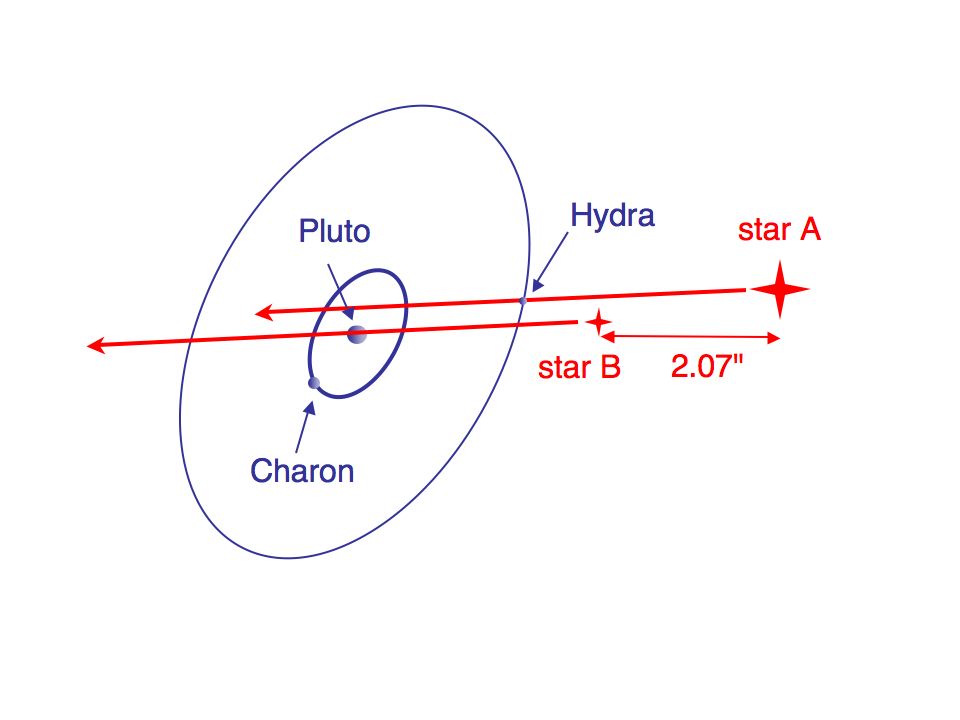 |
The two Pluto/Hydra occultations of 12 may 2007
(one visible from Northern Africa and Europe,
and one visible from Southern Africa and Southern America)
On 12 May 2007 between ~ 03:00 UT and ~04:00 UT, Pluto and its satellite Hydra may occult
the two components of a double star.
The situation is depicted in the figures below:
click  |
click  |
The left panel shows the general motion of Pluto superimposed on a 2mass K-band 1.8x1.8 arcmin FOV. The occulted star is actually double, as shown in charts displayed below. The right panel is a close up view which shows, conversely, the motion of the two stars of the binary, separated by about 2.07 arcsec, relative to Pluto and its satellite system. This view is for an observer in South America, where Pluto will occult star B, while Hydra may occult star A.
Coordinates of star A:
r.a.= 17h 53mn 31.9590 sec
dec.= -16d 22'47.031" (ICRF J2000)
From independent analysis by Marcelo Assafin et al., Rio de Janeiro, and Raoul Behrend, Geneva.
Star B: 2.0653 arcsec from star A at P.A. 99.363 deg
| Star magnitudes: | B= 14.4 | V= 13.3 | R= 13.8 | I= 12.6 | J=11.8 | H= 11.3 | K= 11.2 |
| Pluto/Charon: | B= 15.2 | V= 14.4 | I= 13.6 | J= 13.0 | H=12.9 | K= 13.3 |
Thus, star A is about 1 magn brighter than Pluto in visible bands, and up to 2 magn brighter than Pluto in near IR. Star B has not been measured, but is very roughly one magn dimmer than star A, and thus, roughly comparable to Pluto in visible bands, and a little bit brighter than Pluto in near IR.
For contacts, more information and/or comments, you can contact me me email at:
bruno.sicardy@obspm.fr
click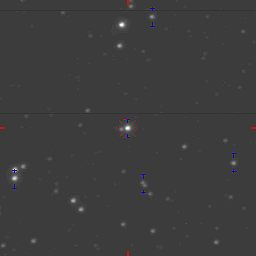 |
click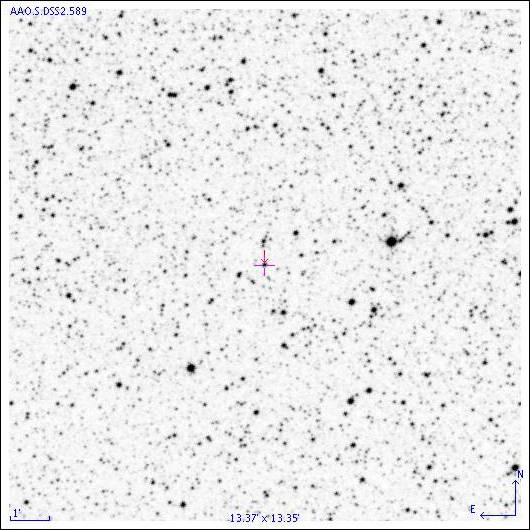 |
click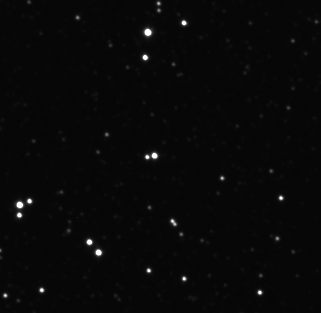 |
click |
50 deg |
20 deg |
5 deg |
1.5 deg |
30 arcmin |
10 arcmin |
The first event to occur is the occultation of star B by Hydra on 12 May 2007 around 03:15 UT.
The map below shows the circumstances of the event, assuming that Hydra's diameter is 100 km. The black dots are plotted every mn. Shadow is moving from right to left at velocity of 17.6 km/sec.
An occultation by Hydra could last up to
about 5 sec if central (typical diameter 100 km). Typical time accuracy is 2-3 mn.
Light grey is for astronomical twilight (Sun elevation between -18 and 0 deg),
dark grey is for night time.
An offset of Pluto's system of about 1400 km toward the north (in the plane of the sky) has been observed during the
stellar occultation of 18 March 2007.
!!! **
IF THIS OFFSET IS MAINTAINED ON 12 MAY 2007, THEN HYDRA OCCULTATION SHOULD OCCUR IN FRANCE,
GERMANY, UK.
** !!!
However, this offset is not currently understood, so that it may be hazardous to apply the March offset to the 12 May event!!!
click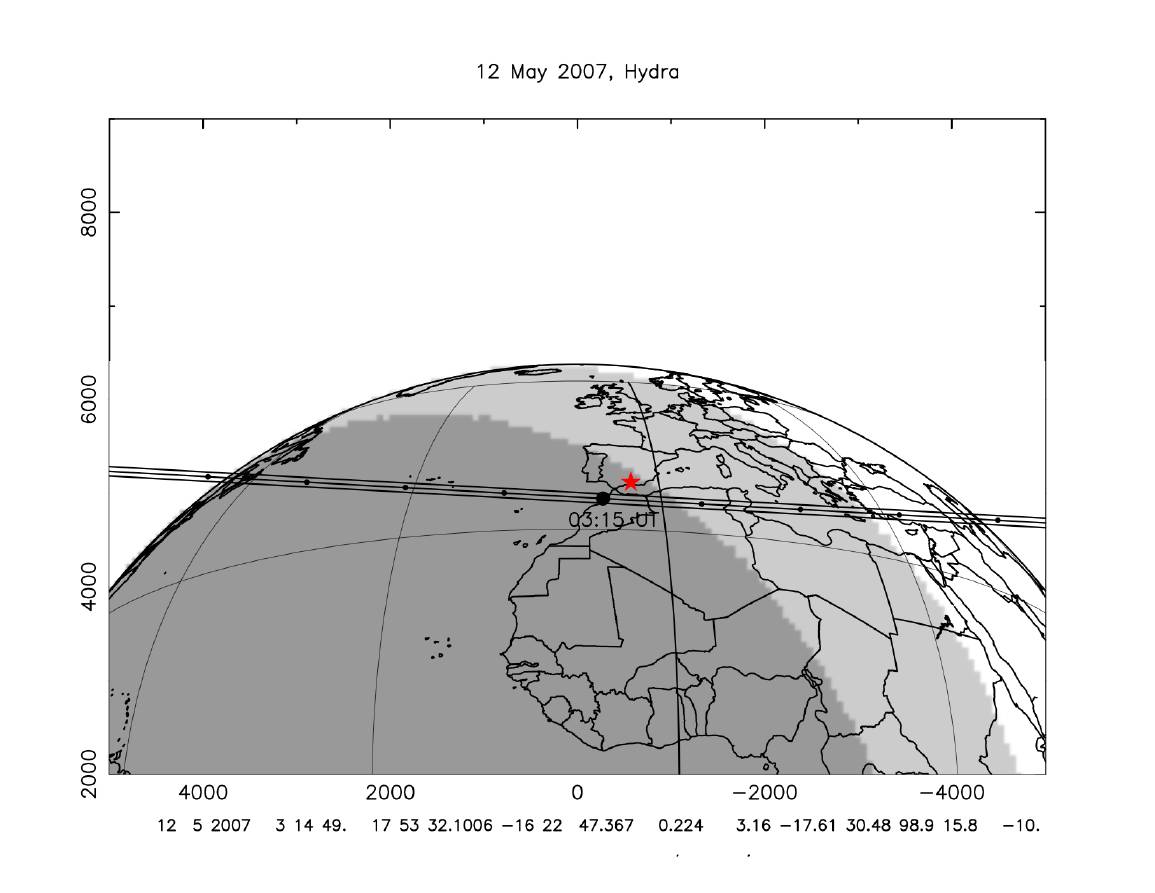 |
The second event to occur is the occultation of star B by Pluto on 12 May 2007 around 04:00 UT, and AT THE SAME TIME, the occultation of star A by Hydra.
The map below shows the circumstances of the event. The center of Pluto's shadow is plotted with back dots every mn. Shadow is moving from right to left at velocity of 17.6 km/sec. The black lines are the zones where the occultation will cause a drop of stellar flux of 50% ("half light level"). The dotted lines are the zones where Pluto occultation will cause a drop of stellar flux of 1%, i.e. barely detectable.
The **blue line** is the track of Hydra's shadow, with the blue dots plotted every mn.
An occultation by Pluto could last up to 3 mn if central,
while a Hydra event could last up to about 5 sec if central (typical diameter 100 km).
Typical time accuracy is 2-3 mn.
Light grey is for astronomical twilight (Sun elevation between -18 and 0 deg),
dark grey is for night time.
An offset of Pluto's system of about 1400 km toward the north (in the plane of the sky) has been observed during the
stellar occultation of 18 March 2007.
!!! **
IF THIS OFFSET IS MAINTAINED ON 12 MAY 2007, THEN PLUTO OCCULTATION SHOULD MISS THE SOURTHERNMOST STATIONS
AT LA SILLA, SAAO, WHILE HYDRA OCCULTATION WOULD OCCUR IN N. ANGOLA AND UPPER PART OF SOUTH AMERICA.
** !!!
However, this offset is not currently understood, so that it may be hazardous to apply the March offset to the 12 May event!!!
click |
The corresponding chords ate various sites are shown in the diagram below.
The dotted circle indicates the highest Pluto's atmospheric layers, causing a stellar drop of 1%.
This circle thus indicates the largest zone around Pluto which is detectable by ground-based occultation.
The solid limb of the planet actually delineates the circle where half of stellar flux will disappear during the occultation.
Green chords are for Namibia, plotted from 03:51 UT to 03:57 UT, with an event centered around 03:54 UT.
Red chords are for S. America, with an event centered around 04:00-04:02 UT according to sites.
If central, the occultation may last up to 3 mn. Timing uncertainties are typically +/- 3 mn,
be careful to allow for this uncertainty when choosing the start and end times of your acquisition !!!
click |
click |